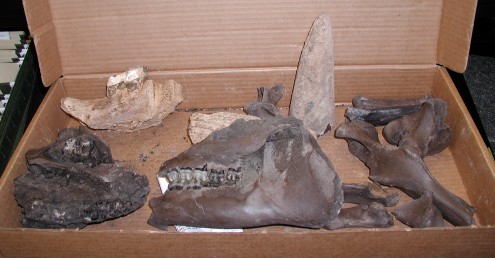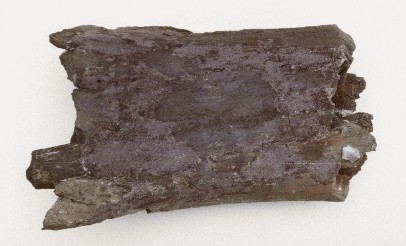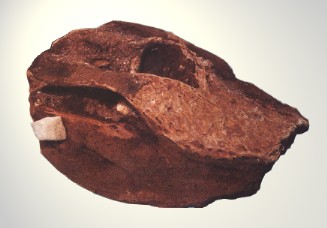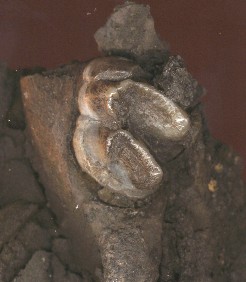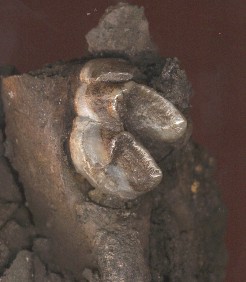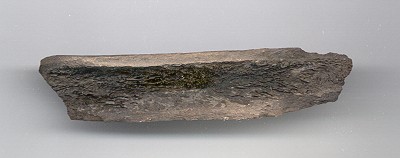Gray Site
Bone galleries
Magnifications refer to a 13 inch (32 cm) wide screen set to 800 x 600 pixels.

Partial tapir mandible, one of first specimens found. Parts recovered seperately by Martin Kohl and Larry Bolt.
Tapir lower leg bone, recovered by Robert Price. Approximately natural size.
Specimens recovered by the geological staff of the Department of Transportation, in the weeks following
the initial discovery. Mandible fragment, left rear, is probable Teleoceras rhino. Tusk tip, rear
center, is from a large but yet unidentified proboscidian. Photo Dr. Robert Hatcher.
Large bone fragment, further crushed by bulldozers; reconstructed measures about 10 x 20 x 35 cm.
White object is angular chert fragment, from encasing sediment.
Partial crocodilian skull, recovered by Department of
Transportation staff. Specimen is approximately 30 cm long.Tortoise carapace fragments, recovered by
Dr Paul Parmalee. Approximately 2/3 natural
size
Tapir bone fragments, approximately
natural size. Fragment of jawbone with
unworn molar in clay. Also noteworthy
are 1) warped layer of sediment, and 2)
through 6), additional bone fragments.
Stereo pair.
Picture arrangement is
non-standard; Sit well back
from screen and cross
your eyes slightly.
Close-up (times four) of molar above.
Conservation note: The mineral marcasite (orthorhombic iron disulfide, FeS2) is present in some of the fossils and matrix. It may be visible as a dark brassy material in cavities of bones, as above, natural size, and 4 x magnification. More often it exists as a greenish black component in matrix, where it can be recognized by the persistant sulfur odor. Mineral and rock specimens containing marcasite often tarnish, corrode, and crumble over several years or decades. Measures will need to be taken to assure this does not happen.
Additional bones: These contain larger images and may take considerable time to download.
Tapir jaws and teeth | Tapir bones | Probable rhinoceros bones
Home | Links | Plant material | Sediments and invertebrates | Geologic features | Drillholes and stratigraphy | Geologic map | Scenes and activities

